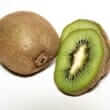Background
- The kiwi fruit initially comes from China, but is now produced in New Zealand, the United States, Italy, South Africa and Chile.
- Kiwi is rich in vitamins C and E, serotonin and potassium and is purported to have antioxidant activity. Kiwi fruit is also known to have the highest density of vitamin C for any fruit, and is low in fat with no cholesterol. Claimed benefits of kiwi fruit, however, may be overshadowed by the growing number of reports of allergy.
- Kiwi has been used preventatively to protect against respiratory illness, increase lung function and increase cardiovascular (heart) health.
- Currently, there are no well-designed clinical trials regarding the efficacy of kiwi fruit; however, additional research may be warranted to investigate its use in prevention of respiratory conditions and in energy enhancement.
References
- Aleman A, Sastre J, Quirce S, et al. Allergy to kiwi: a double-blind, placebo-controlled food challenge study in patients from a birch-free area. J.Allergy Clin.Immunol. 2004;113(3):543-550.
View Abstract - Chen L, Lucas JS, Hourihane JO, et al. Evaluation of IgE binding to proteins of hardy (Actinidia arguta), gold (Actinidia chinensis) and green (Actinidia deliciosa) kiwifruits and processed hardy kiwifruit concentrate, using sera of individuals with food allergies to green kiwifruit. Food Chem Toxicol 2006;44(7):1100-1107.
View Abstract - Deters AM, Schroder KR, Hensel A. Kiwi fruit (Actinidia chinensis L.) polysaccharides exert stimulating effects on cell proliferation via enhanced growth factor receptors, energy production, and collagen synthesis of human keratinocytes, fibroblasts, and skin equivalents. J Cell Physiol 2005;202(3):717-722.
View Abstract - Fiocchi A, Restani P, Bernardo L, et al. Tolerance of heat-treated kiwi by children with kiwifruit allergy. Pediatr.Allergy Immunol. 2004;15(5):454-458.
View Abstract - Hemmer W, Focke M, Gotz M, et al. Sensitization to Ficus benjamina: relationship to natural rubber latex allergy and identification of foods implicated in the Ficus-fruit syndrome. Clin.Exp.Allergy 2004;34(8):1251-1258.
View Abstract - Ko SH, Choi SW, Ye SK, et al. Comparison of the antioxidant activities of nine different fruits in human plasma. J Med Food 2005;8(1):41-46.
View Abstract - Lucas JS, Grimshaw KE, Collins K, et al. Kiwi fruit is a significant allergen and is associated with differing patterns of reactivity in children and adults. Clin.Exp.Allergy 2004;34(7):1115-1121.
View Abstract - Machado M, Sant'anna C, Aires V, Rodrigues PP, et al. [Latex and banana allergies in children with myelomeningocele in the city of Rio de Janeiro]. Rev Assoc Med Bras. 2004;50(1):83-86.
View Abstract - Oppel T, Thomas P, Wollenberg A. Cross-sensitization between poppy seed and buckwheat in a food-allergic patient with poppy seed anaphylaxis. Int Arch Allergy Immunol 2006;140(2):170-173.
View Abstract - Pradalier A, Leriche E, Trinh Ch et al. [The return of the prodigal child or allergy to ficus]. Allerg.Immunol.(Paris) 2004;36(9):326-329.
View Abstract - Rodriguez J, Crespo JF, Burks W, et al. Randomized, double-blind, crossover challenge study in 53 subjects reporting adverse reactions to melon (Cucumis melo). J Allergy Clin.Immunol. 2000;106(5):968-972.
View Abstract - Suli C, Parziale M, Lorini M, et al. Prevalence and risk factors for latex allergy: a cross sectional study on health-care workers of an Italian hospital. J Investig.Allergol.Clin.Immunol. 2004;14(1):64-69.
View Abstract - Taylor JS, Erkek E. Latex allergy: diagnosis and management. Dermatol.Ther. 2004;17(4):289-301.
View Abstract - Thomas L, Low C, Webb C, et al. Naturally occurring fruit juices dislodge meat bolus obstruction in vitro. Clin.Otolaryngol.Allied Sci. 2004;29(6):694-697.
View Abstract - Valls A, Pascual CY, Caballero MT, et al. [Latex allergy]. Allergol.Immunopathol.(Madr.) 2004;32(5):295-305.
View Abstract







